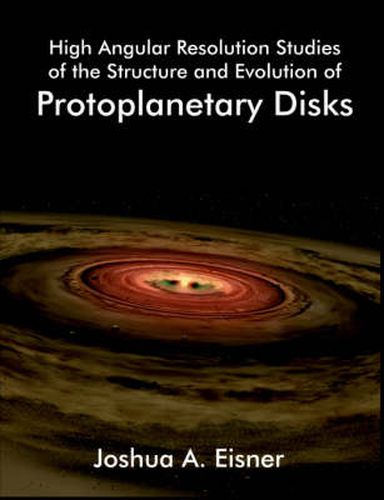High Angular Resolution Studies of the Structure and Evolution of Protoplanetary Disks
Joshua A Eisner

High Angular Resolution Studies of the Structure and Evolution of Protoplanetary Disks
Joshua A Eisner
This title is printed to order. This book may have been self-published. If so, we cannot guarantee the quality of the content. In the main most books will have gone through the editing process however some may not. We therefore suggest that you be aware of this before ordering this book. If in doubt check either the author or publisher’s details as we are unable to accept any returns unless they are faulty. Please contact us if you have any questions.
Young stars are surrounded by massive, rotating disks of dust and gas, which supply a reservoir of material that may be incorporated into planets or accreted onto the central star. In this dissertation, I use high angular resolution observations at a range of wavelengths to understand the structure, ubiquity, and evolutionary timescales of protoplanetary disks. First, I describe a study of Class I protostars, objects believed to be at an evolutionary stage between collapsing spherical clouds and fully-assembled young stars surrounded by protoplanetary disks. I use a Monte Carlo radiative transfer code to model new 0.9 micron scattered light images, 1.3 mm continuum images, and broadband spectral energy distributions. This modeling shows that Class I sources are probably surrounded by massive protoplanetary disks embedded in massive infalling envelopes. For the best-fitting models of the circumstellar dust distributions, I determine several important properties, including envelope and disk masses, mass infall rates, and system inclinations, and I use these results to constrain the evolutionary stage of these objects. Second, I discuss observations of the innermost regions of more evolved disks around T Tauri and Herbig Ae/Be stars, obtained with the Palomar Testbed and Keck Interferometers. I constrain the spatial and temperature structure of the circumstellar material at sub-AU radii, and demonstrate that lower-mass stars are surrounded by inclined disks with puffed-up inner edges 0.1-1 AU from the star. In contrast, the truncated inner disks around more massive stars may not puff-up, indicating that disk structure depends on stellar properties. I discuss the implications of these results for disk accretion, terrestrial planet formation and giant planet migration. Finally, I put these detailed studies of disk structure into a broader context by constraining the mass distribution and evolutionary timescales of circumstellar disks. Using the Owens Valley Millimeter Array, I mapped the millimeter continuum emission toward >300 low-mass stars in the NGC 2024 and Orion Nebula clusters. These observations demonstrate that the average disk mass in each cluster is comparable to the minimum-mass protosolar nebula, and that there may be disk evolution on one million year timescales.
This item is not currently in-stock. It can be ordered online and is expected to ship in 7-14 days
Our stock data is updated periodically, and availability may change throughout the day for in-demand items. Please call the relevant shop for the most current stock information. Prices are subject to change without notice.
Sign in or become a Readings Member to add this title to a wishlist.


